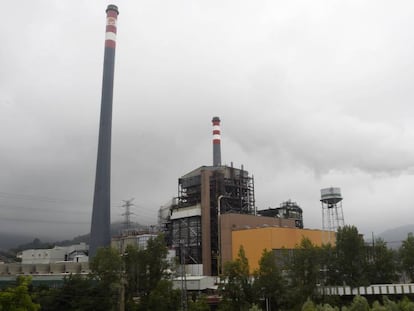The Spanish valley that time forgot
A team of biologists is investigating how draining the abandoned Enobieta reservoir in the Valley of Artikutza, in Spain's Navarre region, will affect the ecosystem in this largely untouched slice of nature
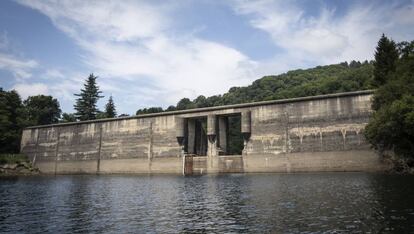
The timeless valley of Artikutza has seen little human activity in the past 100 years. Situated in Navarre, it belongs to the city of San Sebastián, though its real owners appear to be the fish, mammals and insects that move freely through the vast forests that march up the slopes of the surrounding mountains, themselves perfectly conserved and sculpted by numerous rivers and waterfalls.
The only blot on this otherwise idyllic landscape is a 2 km-long reservoir called Enobieta that was built during the 1950s but fell into disuse during the 1970s after supplying the Basque city with quality drinking water for several decades. Due to its negative impact on the environment and its structural problems, San Sebastián officials have begun draining the reservoir while a team of biologists have moved in to study the effects of this kind of project – the biggest in Spain to date –on the ecosystem.
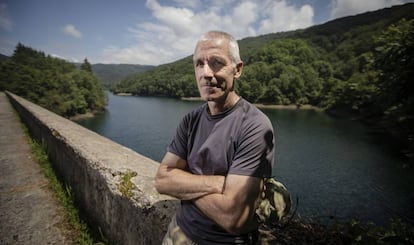
A sign on the door of a red-roofed building tells visitors in both Basque and Spanish that they have entered the valley of Artikutza. Anyone coming on foot is free to enter, while cars are limited to 20 a day and need prior permission from the city hall. These strict rules of entry have been in operation since San Sebastián authorities acquired the 4,000-hectare estate in 1919. At first, a spring supplied the city with drinking water, but over time demand grew, leading to the construction of the Enobieta reservoir. Just two decades later, Enobieta was considered too small and another deposit was constructed which left it redundant.
Arturo Elosegi is one of the few people to have the run of Artikutza, A biologist from the University of the Basque Country (UPV), he heads a research team whose investigations into the impact of Enobieta reservoir on the biodiversity of the valley is being financed to the tune of €98,000 by the BBVA Foundation. As he drives along, Elosegi points to a cluster of traditional Basque dwellings a stone’s throw from the reservoir, where around a dozen people live – the estate’s only human residents. Surrounding this is a forest of oak and beech trees and pines.

The biologist says that the rivers and the general flora and fauna in the valley are far superior to that of the rest of the northern edge of the country, popularly known as Green Spain in English. “This place has been conserved exquisitely,” he says. In fact, scientists, including the Nature 2000 Network, use Artikutza as a point of reference for conservation studies. “It’s the most natural forest there is,” he says. “If we want to know how rivers were before being affected [by human activity], we come here.”
The draining of Enobieta is a gradual but necessary process. Fixing up the dam after 30 years of low-to-no maintenance would have entailed an inordinate expense, according to the experts. But the havoc wreaked on the ecosystem has also been a factor. “On the one hand, we have created a totally artificial habitat which is very bad for most river life. On the other hand, we have affected the water’s course. The flow is no longer natural,” says Elosegi, adding that dams create a barrier that divides communities of species living along the entire length of the river. And the quality of the water drops since the reservoirs can generate metals due to a lack of oxygen.
As the San Sebastián City Council works on a better way for the Enobieta river to return to its original course, the dam itself is on a trajectory that should see it razed before too long. According to the authorities, the water should be drained completely by 2020, although this time frame could be affected by the complexity of the task. So far, several gates have been fitted into the dam to allow for controlled drainage. Once the level drops, it should be easier to work out how to get rid of the dam, the cost of which is still unknown.
And though the municipality believes the level of the water in the reservoir will have dropped considerably between now and the end of next year, this also depends on weather conditions. Strong rains this spring all but canceled out the effect of the drainage from the previous months. At some points, the water could be 30 meters deep, so while the level drops around 15 cm a day, this is, as it were, a drop in the ocean and the reservoir remains an impressive sight if one stands 40 meters up on top of the dam itself.
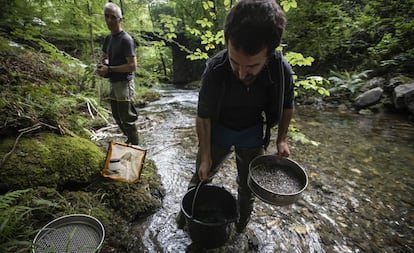
Meanwhile, the fieldwork being carried out by the four biologists from the University of the Basque Country in various parts of the valley continues apace. “We know very little about the consequences of big reservoirs being either disposed of or made redundant,” says Elosegi. The researchers are analyzing the flow of water on various sections of the main river and three of its tributaries. Mirien Atristain who is basing her PhD thesis on the project, explains that they will keep measuring and comparing the results which will show what changes take place during and after the reservoir is emptied.
Elosegi takes out a current meter, an oximeter and a tool to measure water levels, which are all useful for sampling the activity in the rivers and their living conditions. After putting on a pair of fisherman’s boots, he collects data from the river at various intervals for subsequent analysis. The most highly predicted effect of the emptying process is that the main river will begin to resemble the other rivers in the area that were untouched by its presence.
Several meters further on, Aitor Larrañaga collects sediment from the bottom with a net, and filters it into a bucket. He is looking for living organisms such as insects, worms and crustaceans. “The invertebrates have a high bio-indication value,” he says. “By discovering which species we have, we can find out what the conditions of their environment are.” Larrañaga is hoping that eliminating the reservoir will bring about modifications in the habitat of these species, but the changes could also lead to several species disappearing. “The idea is to keep close tabs to see if this happens,” he says.
The biologists also aim to reveal to what extent the dam has proved a barrier for these tiny inhabitants of Artikutza; Larrañaga is analyzing the genetics of the same species living on either side of the dam to see how they compare.

The biologists’ work continues both outside and inside the reservoir in a silence that is broken only by the call of large birds. Two Catalan river and reservoir experts work alongside Daniel Von Schiller, a biologist from the UPV, taking samples of sediment and water from the reservoir. The dam wall itself looms mightily when you come up close in one of the small boats used for the fieldwork.
Biel Obrador, a researcher from the University of Barcelona, takes a bottle fitted with a funnel from the water. This catches the methane gas bubbles that rise up from the reservoir’s floor. Together with CO2, this is one of the substances released into the atmosphere by the sediment that accumulates in a reservoir. “These are two kinds of carbon gases that are strongly linked to the greenhouse effect,” says Von Schiller, who aims to measure the level of these emissions before and after the reservoir is emptied.
At the tail end of the reservoir is the first evidence of its gradual drainage. Where the water has ebbed away from the edge, the sediment that accumulates on the bottom can be seen. Elosegi believes that draining the reservoir will be extremely positive for the Artikutza ecosystem. “There has been practically no human activity here for 100 years, except for this reservoir,” he says. “And we are going to get rid of it, so we think that the nature levels in the valley will go up a notch.”
The Pyrenean desman holes up in Artikutza
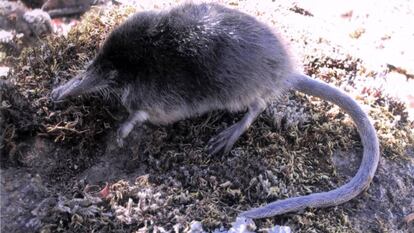
Artikutza is one of the few valleys that still provides refuge to the Pyrenean desman, a small animal related to the garden mole that thrives in clean rivers. Its survival is threatened by the progressive human encroachment on its habitat that previously included the French Pyrenees, Green Spain and Portugal. Environmental consultant Jorge González is part of the research team measuring the impact of Enobieta on the environment with specific regard to the desman. “This animal has been in radical decline and it’s very important that we keep tabs on the evolution of its population,” he says, adding that it is a very elusive nocturnal creature, making this task particularly challenging. Consequently, he has created a small artificial refuge where the desman deposits its feces. The waste can then be analyzed to reveal what they have been eating and so the conditions of their environment.
Among their favorite foods are small invertebrates, according to Aitor Larrañaga. By studying the conditions of these species in Artikutza, it can be determined whether the valley will still make a good habitat for it after Enobieta has been drained. “Its fate is linked to the fate of good quality rivers,” says González. “That is why we often use it as a point of reference for the state of water conservation.”
English version by Heather Galloway.
